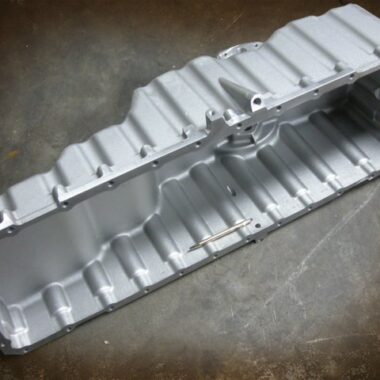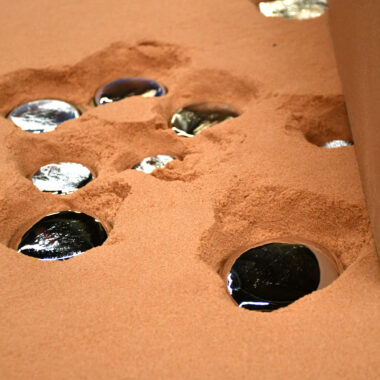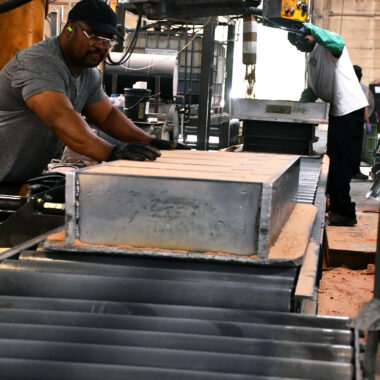About Aluminum Casting Chronicles: Techniques, Trends, and Tips
About Aluminum Casting Chronicles: Techniques, Trends, and Tips
Blog Article
Crafting Excellence: Exactly How to Accomplish High-Quality Aluminum Castings Whenever
In the realm of aluminum casting, the search of excellence is a continuous trip that calls for a careful approach and a keen understanding of the ins and outs entailed. Accomplishing constant premium aluminum spreadings requires a comprehensive understanding of the procedures, from choosing the proper alloy to executing exact mold and mildew designs and diligently regulating spreading specifications. Nevertheless, truth proficiency hinges on the capacity to execute these components effortlessly to develop perfect castings every time. As we discover the ins and outs of crafting perfection in aluminum castings, revealing the essential strategies and strategies that cause flawless outcomes comes to be critical for those striving for quality in this customized area.
Comprehending Aluminum Spreading Procedures
Aluminum casting procedures, vital in the production industry, include the complex improvement of molten light weight aluminum into solid types via a collection of thoroughly regulated steps. Understanding these procedures is vital to achieving top quality aluminum spreadings regularly - about aluminum casting. The key methods used in light weight aluminum casting are pass away spreading, sand spreading, and investment casting

Each of these processes has its benefits and is chosen based on aspects like complexity, quantity, and desired coating of the light weight aluminum spreading. about aluminum casting. Comprehending the details of these techniques is critical for manufacturers aiming to generate top quality aluminum spreadings continually
Choosing the Right Aluminum Alloy
Picking the proper light weight aluminum alloy is an important decision in the manufacturing of premium light weight aluminum spreadings. The option of alloy dramatically impacts the properties and features of the last product. Different light weight aluminum alloys provide differing degrees of strength, deterioration resistance, machinability, and thermal conductivity. When picking an aluminum alloy for casting, it is important to think about the particular demands of the application to guarantee ideal efficiency.
One of the most generally utilized aluminum alloys for casting is A356 - about aluminum casting. For applications calling for high toughness, 7075 aluminum alloy is a preferred selection due to its phenomenal strength-to-weight proportion.
In enhancement to mechanical buildings, considerations such as cost, schedule, and post-casting procedures should also influence the selection of the right light weight aluminum alloy. By carefully reviewing these elements, makers can make certain the manufacturing of high-grade light weight aluminum recommended you read castings that fulfill the desired specs.
Carrying Out Appropriate Mold Design
Establishing a reliable mold and mildew layout is critical for guaranteeing the successful production of premium light weight aluminum castings. Correct mold and mildew design plays a significant function in achieving the preferred attributes of the end product. To carry out a successful mold layout, elements such as material circulation, cooling down prices, and part geometry need to be meticulously considered.
One trick aspect of mold style is making sure proper filling and solidification of the additional hints light weight aluminum within the mold tooth cavity. This entails developing runner and gating systems that help with smooth steel circulation and avoid flaws such as air entrapment or incomplete dental filling. Additionally, incorporating air conditioning networks into the mold style aids control solidification rates and lower the danger of porosity or shrinking issues.

Controlling Casting Parameters

Making Sure Post-Casting Top Quality Checks
To keep the excellent quality of light weight aluminum spreadings, extensive post-casting high quality checks are important. After the casting procedure is completed, it is important to guarantee that the final items meet the desired specifications and criteria. One of the key high quality checks entails evaluating the surface coating of the castings to determine any kind of defects such as porosity, cracks, or surface area irregularities. This visual inspection is typically supplemented by non-destructive testing techniques like ultrasonic screening or color penetrant inspection to identify interior defects that may jeopardize the stability of the spreading.
Dimensional precision is an additional essential element that has to be validated during post-casting high quality checks. Measurements of key dimensions and tolerances should be taken to verify that the castings comply with the required specifications. Furthermore, mechanical properties such as firmness, tensile strength, and influence resistance may require to be examined with product screening to guarantee that the spreadings have the required strength and resilience for their designated application.
Verdict
In verdict, attaining high-grade aluminum castings needs a thorough understanding of the spreading procedures, choosing the appropriate alloy, designing mold and mildews properly, managing casting parameters diligently, and conducting post-casting high quality checks carefully. By complying with these actions, manufacturers can regularly create aluminum castings that meet the highest standards of top quality and efficiency.
Achieving consistent high-quality light weight aluminum spreadings demands a comprehensive understanding of the procedures, from picking the proper alloy to implementing exact mold and mildew designs and meticulously regulating casting criteria. The key approaches utilized in light weight aluminum spreading are die casting, sand spreading, and investment spreading.
Investment casting, also understood as accuracy spreading, involves producing wax patterns that are coated in ceramic to form molds.Choosing the proper light weight aluminum alloy is an essential decision in the production of top notch light weight aluminum spreadings.Ensuring exact control over spreading parameters is essential for maintaining consistency and top quality in aluminum casting production.
Report this page